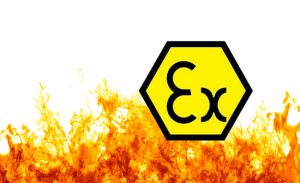AKAP Accreditation Organization

$400.00 – $450.00


Further details
For products intended for use in potentially explosive atmospheres destined for the EU Market, we evaluate them to the applicable requirements of the ATEX Directive and the relevant EN standards for Explosive Atmospheres. Complying products may bear the following markings:
 – the Ex symbol indicates the product complies with an explosion protection technique.
– the Ex symbol indicates the product complies with an explosion protection technique.
Section 7 of EN 60079 or EN 60079 7 requires the design, manufacture, testing and marking of explosion-proof (e) anti-explosion equipment and components, which are used in gas-hazardous environments. Compliance with EU requirements for EU Type Examination or ATEX certification.
ATEX stands for atmosphères explosibles. It’s a European Union directive from the European Committee for Standardization that covers “equipment and protective systems intended for use in potentially explosive atmospheres.” An atmosphere can be explosive for several reasons, including flammable gases, mists or vapors, or combustible dust.
All equipment and protective systems intended for this type of use in the EU must meet ATEX health and safety requirements. In this way, the directive is similar to an OSHA or NEC standard in the United States.
Equipment manufacturers whose products are intended to be used in Europe are responsible for making sure their equipment complies with ATEX standards. This process involves conformity assessment procedures and certification by a third party called a “Notified Body.” Certified equipment is marked with the symbol shown below.

Manufacturers/suppliers (or importers, if the manufacturers are outside the EU) must ensure that their products meet essential health and safety requirements and undergo appropriate conformity procedures.
Organisations in the EU must follow Directives to protect employees from explosion risk in areas with an explosive atmosphere.
There are two ATEX Directives (one for the manufacturer and one for the user of the equipment):
Note: The ATEX 95 “equipment” Directive 94/9/EC, was withdrawn on 20 April 2016 when it was replaced by ATEX 214 Directive 2014/34/EU. ATEX Directive 2014/34/EU is mandatory for manufacturers as of 20 April 2016 as stated in article 44 of the Directive.
ATEX Directive 2014/34/EU was published on 29 March 2014, by the European Parliament. It refers to the harmonisation of the laws of the Member States relating to equipment and protective systems intended for use in potentially explosive atmospheres.
Regarding ATEX 99/92/EC Directive, the requirement is that Employers must classify areas where potentially explosive atmospheres may occur, into zones. The classification given to a particular zone, and its size and location, depends on the likelihood of an explosive atmosphere occurring and its persistence if it does.
Benefits of ISO implementation:
– Increase customer and consumer confidence
– Increasing the quality of products/services
– Reduce waste and losses in products/services and ultimately reduce costs
– Save on consumables and increase profits
– Planning, implementation of affairs in the form of a predefined international system
– Improve performance, increase productivity and speed in affairs
– Increase efficiency and customer satisfaction
– Reducing the number of complaints
– Improvement and uniformity in the quality of products/services
– Timely delivery of products/services
– Global competition
– Prevent or reduce unexpected events
– Earning points in tenders, obtaining ranks and grades from government organizations, providing evidence in exports
– Advertising use in headers, company site and all advertising matters
– Earn points in selecting sample units
– Reduce waste and waste time
– Creating confidence inside and outside the organization
– Transparency of processes and indicators
– Ensuring that customer needs and expectations are met
– Production of product/service with better quality
– Help with more marketing and sales and create demand
– Increasing the productivity and motivation of human resources
– Correcting errors and preventing their recurrence
– Improving communication within the organization
– Prevention of non-compliant product/service production
– Develop sales methods and provide after-sales service
$450.00 – $500.00